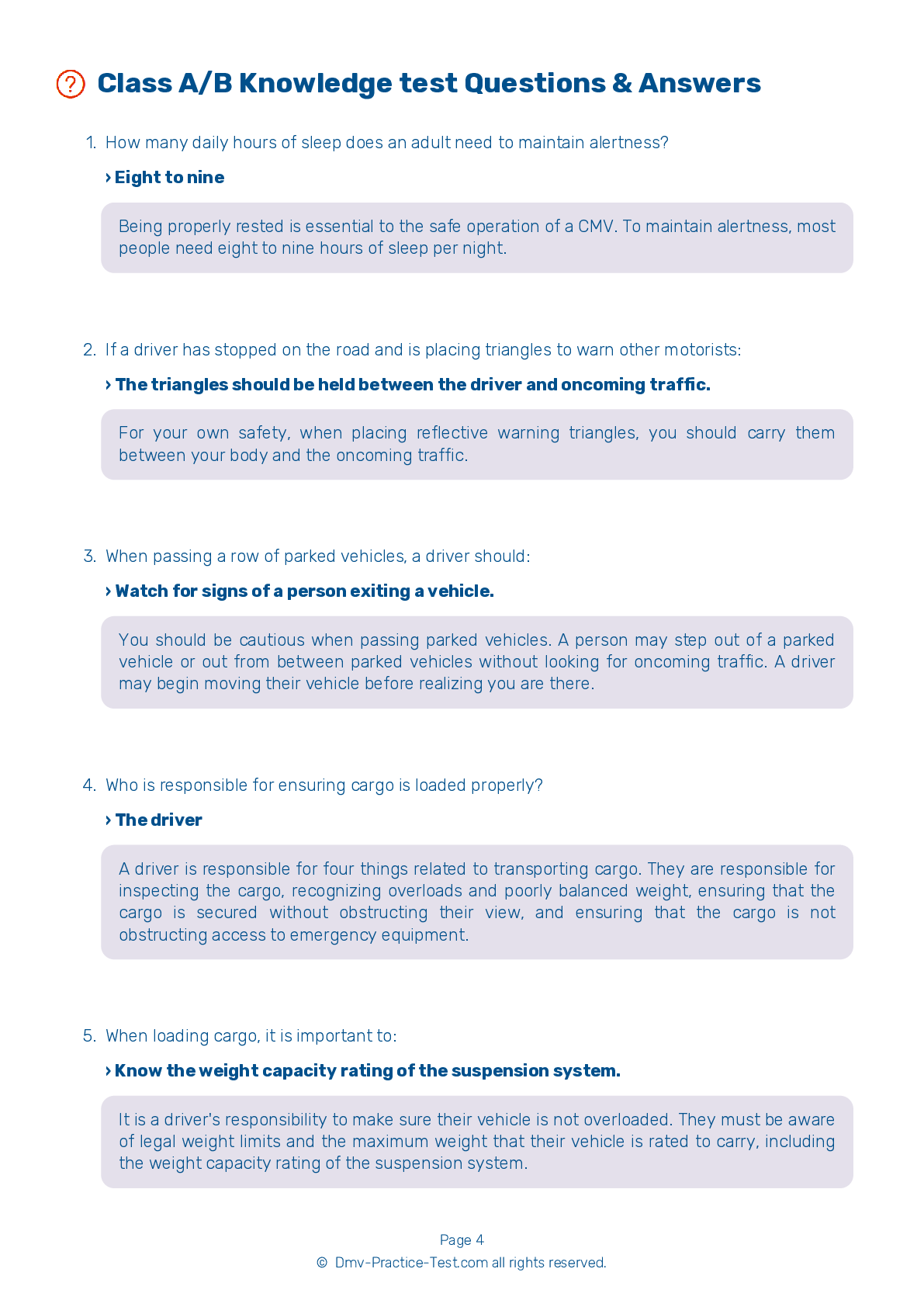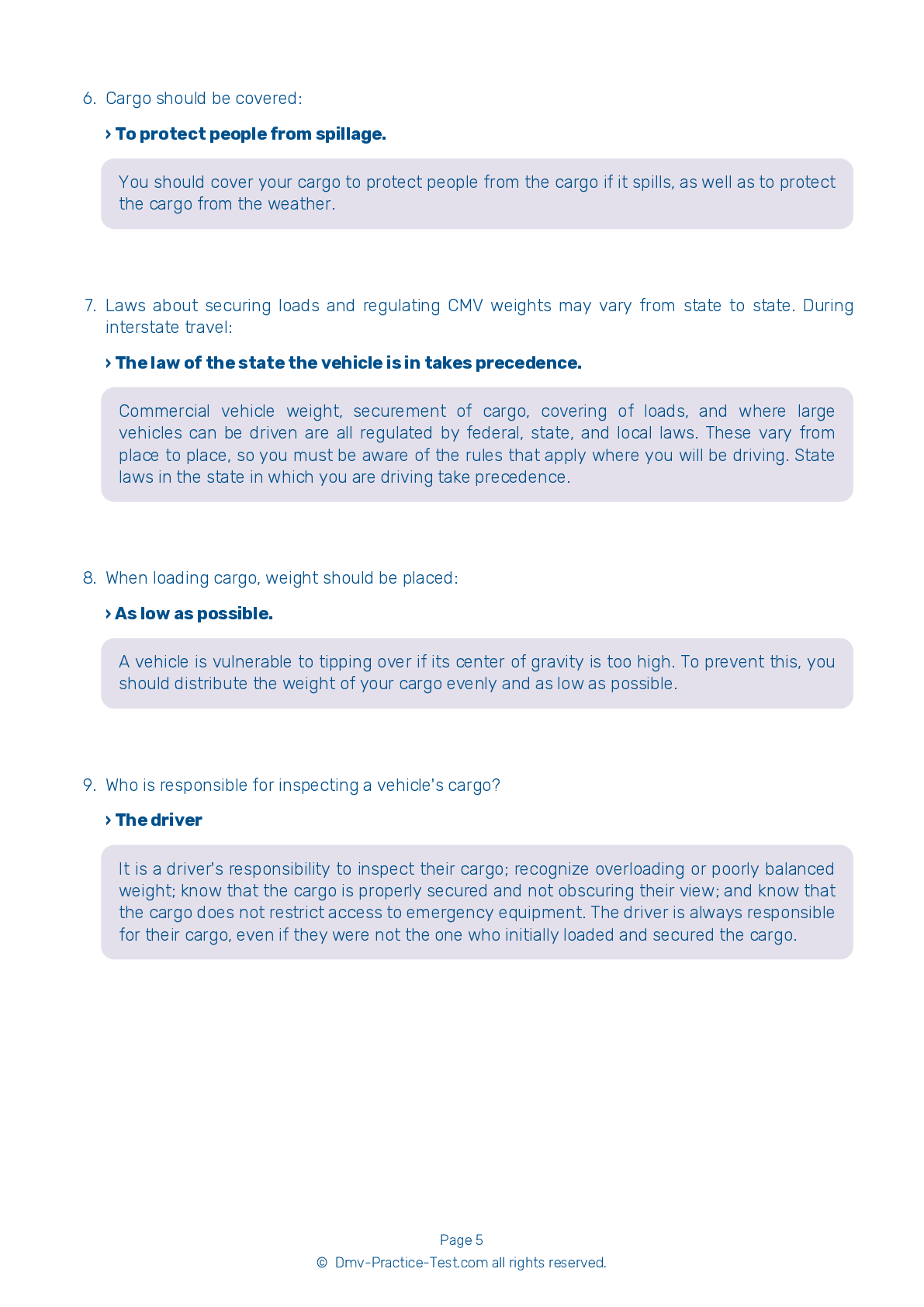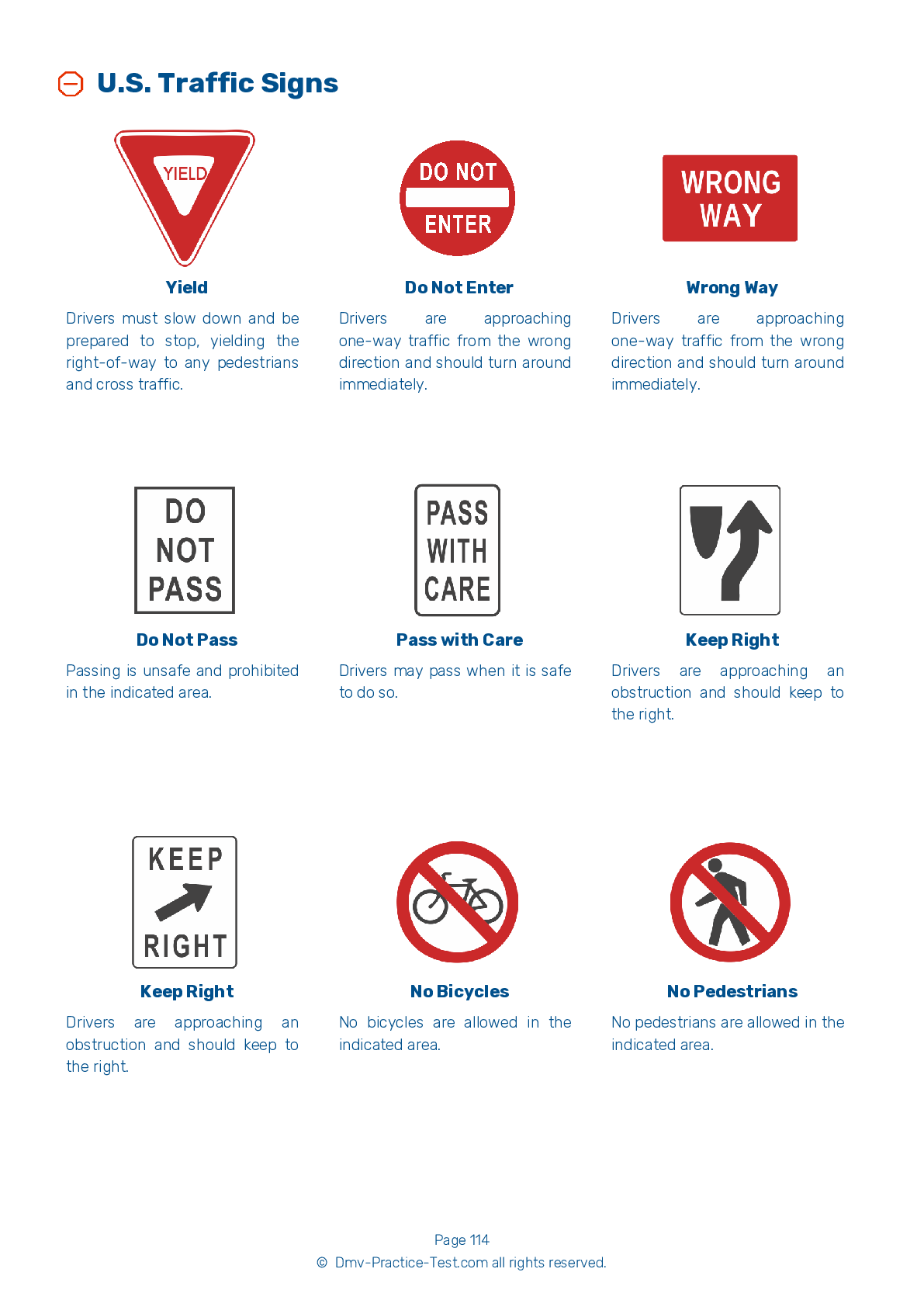Hazmat Test | Virginia 2025 #2 Page 2 of 5
On our website, we provide FREE practice - CDL hazmat test online! The official exam test consists of several obligatory parts, with all of them checking your knowledge of different blocks of road rules. If you need to obtain a VA CDL hazmat endorsement in 2025, practice as much as possible. Free sample tests published on our website will help you check and improve your knowledge and boost your grades. Please bear in mind that Virginia requirements for issuing a hazmat endorsement for CDL may vary from those established in other states.
7 . Unless the package is clearly unsafe, a driver needs ____ to accept a package.
When a shipper packages hazardous materials, they certify that the package has been prepared according to Hazardous Materials Regulations (HMR). Unless a package is clearly unsafe or noncomplying with HMR, you may accept the shipper’s certification concerning the proper packaging of a material.
8 . A placard indicating hazardous materials is which shape?
In general, vehicles carrying hazardous materials are required to display diamond-shaped warning signs on all four sides. These warning signs are called "placards."
9 . When transporting hazardous materials, placards:
When required, hazardous materials placards must be placed on all four sides of a vehicle transporting hazardous materials.
10 . If accepting a shipment, what could indicate that the cargo contains hazardous materials?
Cylinders and drums are often used to contain hazardous materials. Be sure to take the proper precautions if transporting a cargo of hazardous materials.
11 . Shippers package in order to ____ hazardous materials.
Shippers package hazardous materials in a way that is meant to completely contain the materials. Vehicles should be placarded to communicate the risk of the cargo.
12 . As a driver, which of the following is not your job at the scene of an accident?
If you are involved in an accident while carrying hazardous materials, it is your responsibility as the driver to keep people away from the scene; limit the spread of material if you can safely do so; inform emergency response personnel of the dangers posed by the materials; and provide emergency personnel with the shipping papers and emergency response information. Unless you have protective equipment and the necessary training, do not try to fight hazardous materials fires yourself.
See the exact questions that will be on the 2025 Virginia DMV exam.
99.2% of people who use the cheat sheet pass the FIRST TIME
Lillian MCcranie explains how our CDL study guide was helpful in passing the exam and recommends it to everyone.
Cameron tells us how he purchased the CDL exam, and found it to be a useful tool which helped him pass the exam and find a job.



